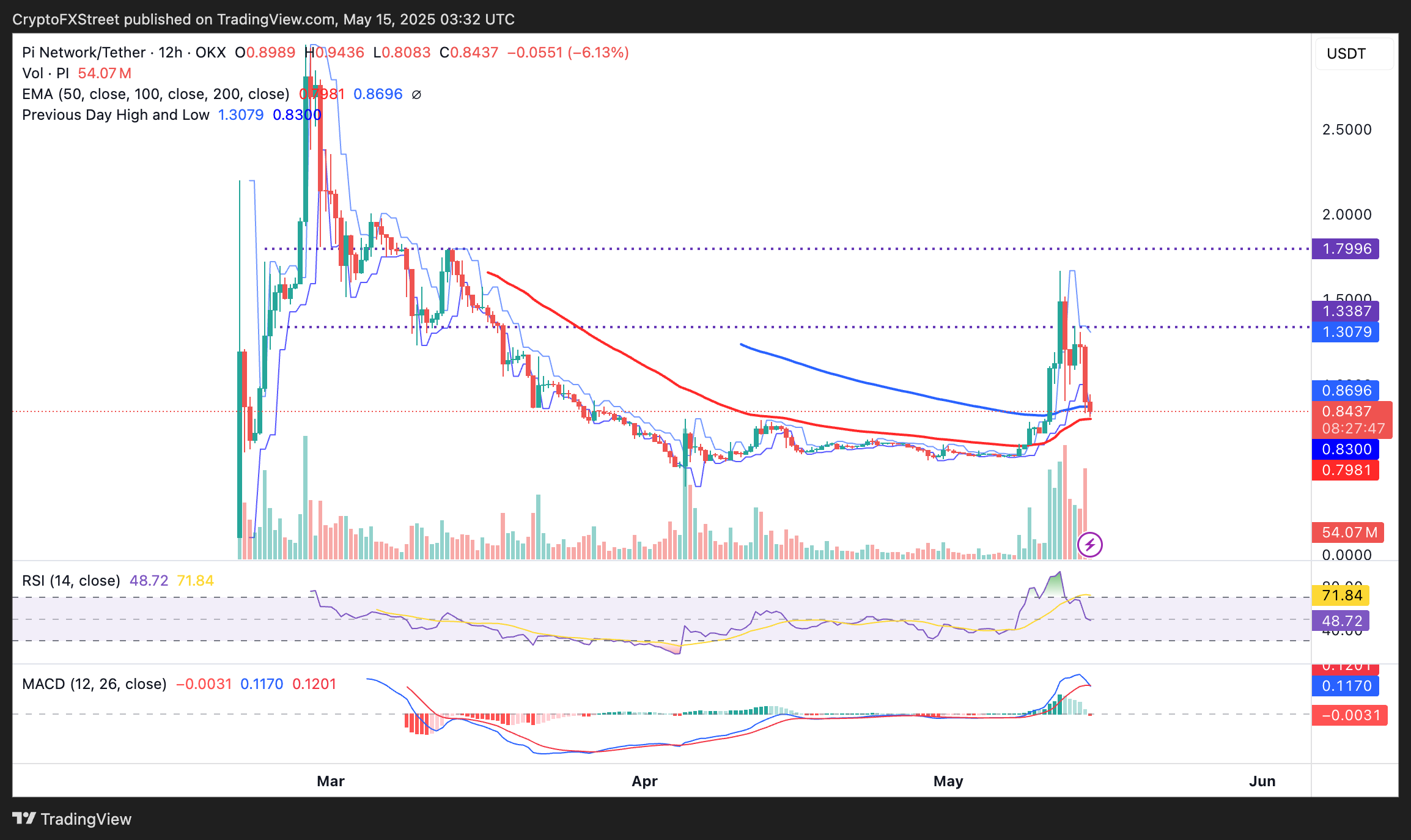Pi Network tumbles, erasing gains after announcing $100 million startup investment initiative
- Pi Network extends losses significantly below $1.00 after peaking at $1.66 on Monday.
- Pi Network Ventures launches a $100 million fund held in Pi and USD to invest in startups.
- Waning community confidence sparks sharp losses as the Pi Network team falls short of expectations.
Pi Network’s (PI) price nurses substantial losses while trading around $0.84 on Thursday, decoupling from broader consolidation in the market. The colossal drawdown from PI’s Monday peak of $1.66 comes after the team announced a $100 million investment initiative on Wednesday, targeting startups.
Pi Network targets startups with a $100 investment fund
On Wednesday, Pi Network’s team announced that the project will start investing in “startups and businesses that advance the utility and real-world adoption of Pi.” The strategic program aims to invest in high-quality startups and companies spanning various sectors, but most importantly, spearhead innovation and the ecosystem’s growth.
The Pi Network team hopes that supporting noble initiatives will accelerate utility creation and advance real-world integration.
Despite Pi Network touting its initiative as “a pivotal step forward,” PI’s price has plummeted, erasing gains from Monday’s $1.66 high, dropping over 30% in 24 hours to $0.84, reflecting sharp market skepticism.
Users in the community expressed mixed reactions, with some lauding the idea as a great initiative for the ecosystem, but sentiment remained negatively skewed.
“I am disappointed. You used your community to build hype, driving up our hopes, only to release an announcement that serves you,” Dave Roscoe, a PI user, said, responding to the announcement.
Users urged the team focus on issues that directly impact the network users, calling for flexibility in the staking feature. “when people choose the option to stake ( or they were not allowed to change that option during KYC process) it was a time you said Pi does not have a price and it wouldn’t be listed,” Sentinel, another Pi user wrote.
What’s next for Pi Network as downside risks escalate
Pi Network’s price extends losses during the Asian session, down nearly 7% on the day as investors shift from risk-on to risk-off sentiment. The rally from last week built on the anticipation of a major centralised exchange listing, accentuated by broader bullish sentiment in the crypto market.
PI faces sustained downward pressure as traders exit positions, with the 12-hour 100 Exponential Moving Average (EMA) at $0.86 failing to stop selling. Attention now shifts to the 50 EMA near $0.80, which could curb the decline, enticing dip-buyers to provide liquidity and potentially drive PI above the $1.00 psychological resistance.

PI/USDT 12-hour chart
Traders should temper recovery expectations, especially with the Moving Average Convergence Divergence (MACD) indicator falling toward the centre line. A sell signal would encourage traders to sell PI, adding to the headwinds as the MACD line (blue) crosses beneath the signal line (red).
The Relative Strength Index (RSI) indicator validates the downtrend as it slides below the midline of 50 from its Monday peak of 92.95. Beyond the 50 EMA at $0.80, traders should brace for a potential retest of April’s low at $0.40
Cryptocurrency prices FAQs
Token launches influence demand and adoption among market participants. Listings on crypto exchanges deepen the liquidity for an asset and add new participants to an asset’s network. This is typically bullish for a digital asset.
A hack is an event in which an attacker captures a large volume of the asset from a DeFi bridge or hot wallet of an exchange or any other crypto platform via exploits, bugs or other methods. The exploiter then transfers these tokens out of the exchange platforms to ultimately sell or swap the assets for other cryptocurrencies or stablecoins. Such events often involve an en masse panic triggering a sell-off in the affected assets.
Macroeconomic events like the US Federal Reserve’s decision on interest rates influence crypto assets mainly through the direct impact they have on the US Dollar. An increase in interest rate typically negatively influences Bitcoin and altcoin prices, and vice versa. If the US Dollar index declines, risk assets and associated leverage for trading gets cheaper, in turn driving crypto prices higher.
Halvings are typically considered bullish events as they slash the block reward in half for miners, constricting the supply of the asset. At consistent demand if the supply reduces, the asset’s price climbs.



